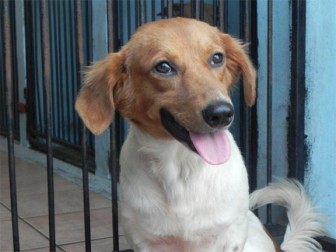The previous series of articles dealt with the heart and circulatory system. We spent a long time discussing canine heartworm as a great (and ever-increasing) ‘new’ disease, which impedes the functions of the heart and blood circulation.
Today, we turn to problems associated with the nervous system. We will be dealing with the treatment of concussions and convulsions (‘fits’) and paralyses and herniated discs (‘slipped’ discs) and the like.
Firstly though, let’s do a superficial introduction to the nervous system.
General remarks

The central nervous system is composed of the cerebrum, cerebellum, mid-brain and brain stem.

The cerebrum is the largest part of the brain. It is the area of learning, memory, reasoning and judgment. It initiates voluntary action on the part of the dog. It is composed of two hemispheres.
The cerebellum is also a structure with two lobes. It sits behind the cerebrum and its main function is to integrate the motor pathways of the brain, so as to maintain coordination and balance.
In the mid-brain and brain stem are found centres which control the respiratory rate, the heart rate, the blood pressure, and other activities essential to life. At the base of the brain are centres for important reactions such as hunger, rage, thirst, hormone activity, and temperature control.
The spinal cord passes down a bony canal formed by the arches of the vertebral bodies (backbone). The cord sends out nerve roots (36 or 37 pairs), which combine with one another to form major nerve networks. In turn, these networks subdivide into the peripheral nerves. They carry motor impulses to the muscles and receive sensory input from the skin and deeper structures.
A special set of nerves, called the cranial nerves (12 pairs), pass directly from the brain out into the head and neck through special holes in the skull. The optic nerves (to the eye), the otic nerves (to the ears), and the olfactory nerves (to the scent organs) are examples of cranial nerves.
Common neurological problems affecting the dog are head injuries, seizures, paralysis, coma, and spinal cord diseases (notably disc problems).
We will continue with this topic next week, but without so much base science which you, dear reader, had to endure today.
Please implement disease preventative measures (vaccinations, routine dewormings, monthly anti-heartworm medication, etc) and adopt-a-pet from the GSPCA’s Animal Clinic and Shelter at Robb Street and Orange Walk, if you have the wherewithal to care well for the animals. Do not stray your unwanted pets, take them to the GSPCA’s Clinic and Shelter instead. If you do not wish your pet to have puppies or kittens, you may exploit the GSPCA’s free spay and neutering programme. If you see anyone being cruel to an animal, or if you need any technical information, please get in touch with the Clinic and Shelter by calling 226-4237.




